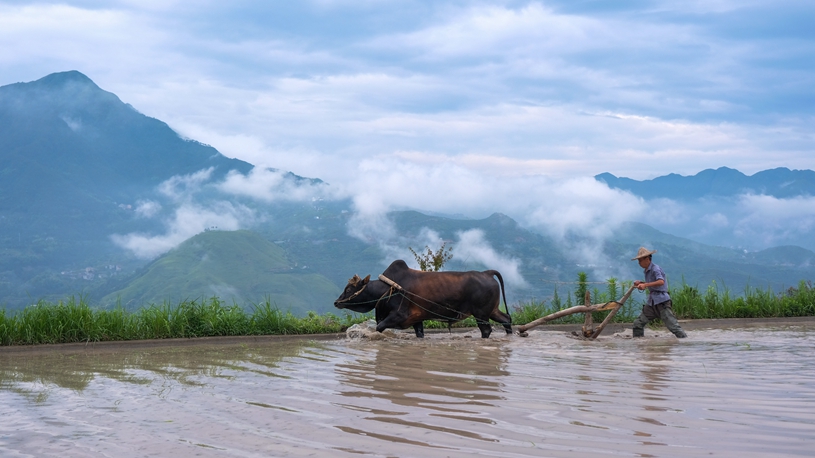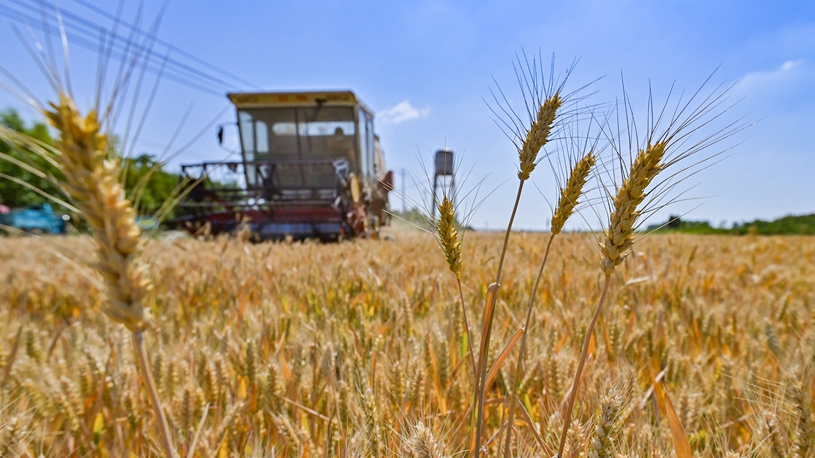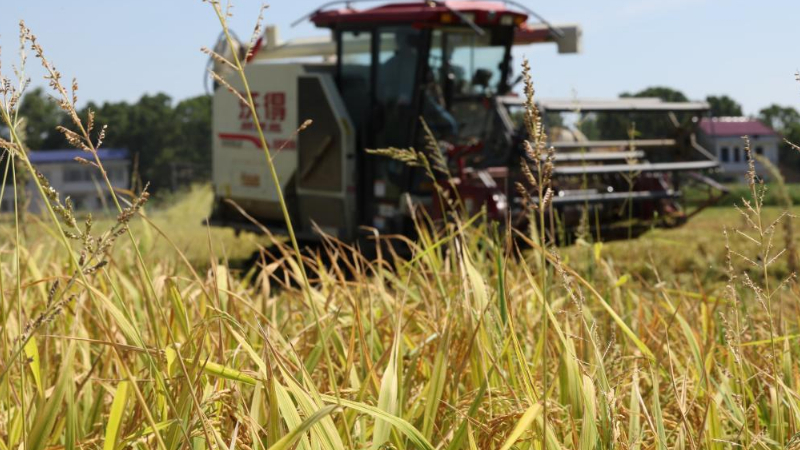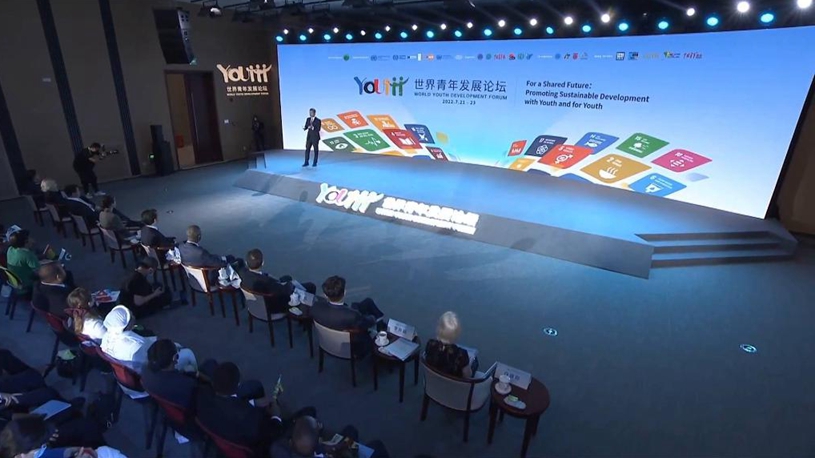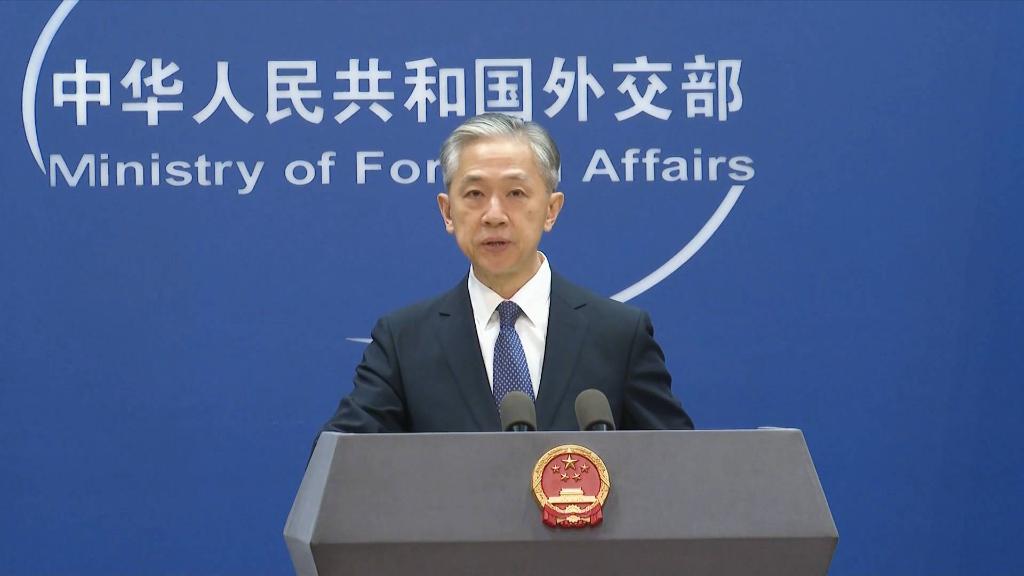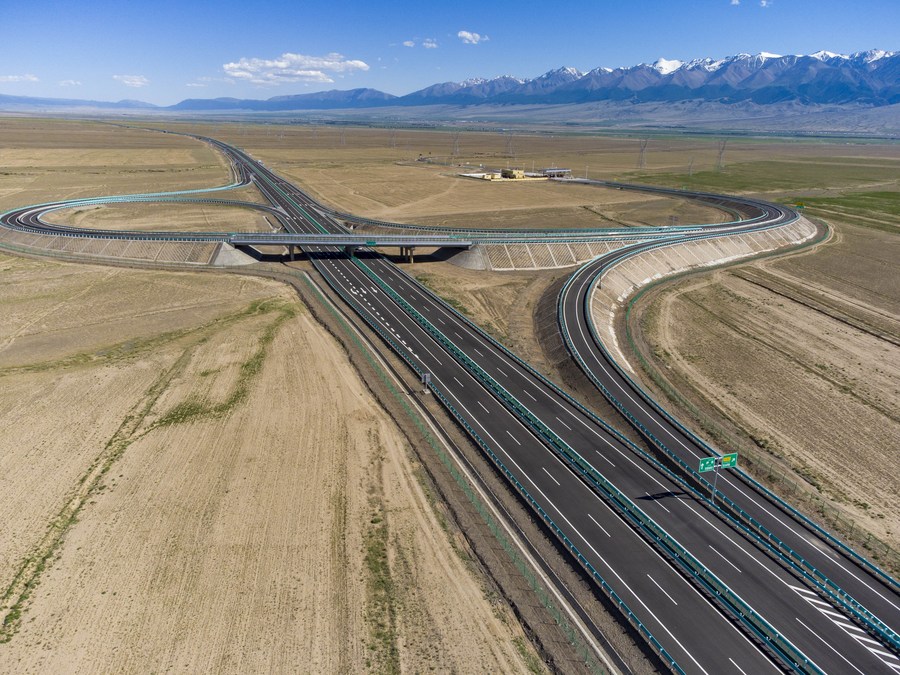
Aerial photo taken on June 29, 2021 shows a section of the Beijing-Urumqi Expressway in Kazak Autonomous County of Barkol, northwest China's Xinjiang Uygur Autonomous Region. (Xinhua/Hu Huhu)
URUMQI, July 23 (Xinhua) -- Song Jun, 45, had traveled across China a few days earlier from the southern coastal city of Shenzhen to Urumqi, the capital of westernmost China's Xinjiang Uygur Autonomous Region.
Having been engaged in the international trade of agricultural commodities for 20 years, Song has been committed to facilitating cooperation between overseas source suppliers and Chinese food processors. This time, what attracted him was the market potential of Xinjiang's high-quality agricultural and forestry products.
In China, Xinjiang's fruits and agricultural products do not need to be advertised because of their high quality with low pollution. Song and his team want to scale up the application of low-temperature direct extraction technology in Xinjiang to extract products such as jujube, pomegranate, and cistanche into liquid. They also want to solve the problems of scattered lands and short planting seasons by using vehicle-mounted mobile factories.
He has also worked with Xinjiang's agriculture, forestry, and commerce departments to study how to turn agricultural products sold in sacks into high-value-added industrial products sold by grams.
Along with Song, more than 100 Chinese academics and entrepreneurs have made suggestions for Xinjiang's future economic development at a high-level forum over the week.
"Xinjiang has ushered in an important period of strategic opportunities for high-quality development," Bai Chunli, an academician of the Chinese Academy of Sciences (CAS), said. "High-quality development" is a buzzword experts in different fields pay close attention to.
Qu Jian, vice dean of the Shenzhen-based China Development Institute, was one of the planners of Xinjiang's two state-level economic development zones 13 years ago. He said the same as the coastal areas, Xinjiang used to rely on robust investment in fixed assets and labor employment for growth.
Now, Xinjiang has entered the transition period of economic development, increasingly driven by scientific and technological progress, educational innovation, and institutional innovation, Qu said.
In the first half of this year, Xinjiang's GDP grew by 4.9 percent, ranking third among all provinces and autonomous regions in China. From 2012 to 2021, Xinjiang's GDP increased from 740 billion yuan (109.6 billion U.S. dollars) to 1.6 trillion yuan, with an average annual growth rate of 7.5 percent.
Before the forum, more than 40 academicians from the CAS and the Chinese Academy of Engineering (CAE) did field research in Xinjiang for about a week on sectors including energy, the chemical industry, water resources, and the digital economy. With rich first-hand data and respective industrial experience, they submitted advisory reports.
Shao Xinyu, vice minister of science and technology, said the ministry would promote the high-quality development of various science and technology parks. It would also drive cotton and wind-energy innovation centers and accelerate the training of academic leaders and community-level agricultural science and technology personnel in Xinjiang.
"We encourage academicians to bring their research achievements and talents to Xinjiang. We support academicians in launching major projects and platforms in Xinjiang to conduct core research and tackle primary scientific and technological problems," said Li Xiaohong, president of the CAE.
How to carry out innovative international cooperation in Xinjiang, also known as the core area of the Silk Road Economic Belt, is another topic of interest for experts and scholars.
Experts have noticed that the China-Europe freight train service and cross-border cooperation zone achieved remarkable results. Xinjiang plays a significant role in Eurasian economic and trade logistics. Industrial upgrading in Xinjiang will also support the Belt and Road Initiative in the future.
In the first half of this year, 6,195 freight trains between China and Central Asia reached Kazakhstan by way of Xinjiang, a significant increase despite the pressure of the pandemic.
Xinjiang is rich in energy resources, with wind and solar energy reserves ranking first in China. In the context of China's promise to achieve carbon peak and neutrality, many experts mapped out realistic paths for Xinjiang to make clean and efficient use of coal, promote green and low-carbon technologies, and promote the renewable energy industry.
After the forum, Song, determined to start a business in Xinjiang, will go to the vast agricultural areas in southern Xinjiang with his team to land his project as soon as possible.
Many entrepreneurs like Song have attended the forum on-site or via webcast. For them, Xinjiang, a resource-rich region at the forefront of China's westward opening-up, could be a great place to invest in the future. ■



